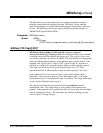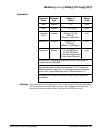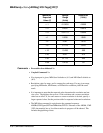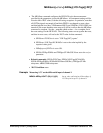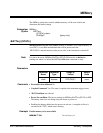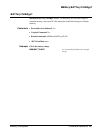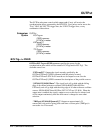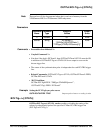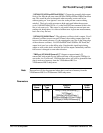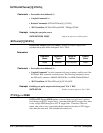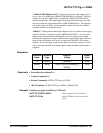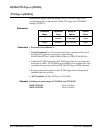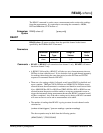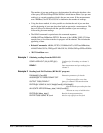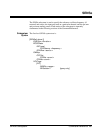
Parameters
Parameter
Name
Parameter
Type
Range of
Values
Default
Units
n
numeric 0|1 none
mode
boolean OFF|0|ON|1 none
Comments • Executable when initiated: No
• Coupled Command: Yes, this command will cause a settings conflict error if the
same ECLTRG trigger line is used in any of the following:
SENSe:ROSCillator:SOURce, ARM:STARt|SEQuence1:SOURce1,
ARM:STARt|SEQuence1:SOURce2 or TRIGger:STARt|SEQuence1:SOURce.
• Routing synchronization pulses to the ECLTRG trigger lines is independently
enabled/disabled for each line.
• Related Commands: OUTPut:ECLTrg<n>:FEED
• *RST Condition: OUTPut:ECLTrg<n >:STATe OFF
Example Enabling sync pulse output to ECLTRG0 and ECLTRG1
OUTP:ECLT0 ON Enable ECLTRG0
OUTP:ECLT1 ON Enable ECLTRG1
:EXTernal[1]:FEED
OUTPut:EXTernal[1]:FEED <source> specifies the source for the
synchronization pulse which will be output on the "Ext 1" BNC. The available
sources are:
“ARM[:START|:SEQuence[1]]”: Changes the normally high output level to
low as soon as an ARM event (ARM:SOURce) is processed, and before any
programmed ARM:DELay occurs. The level remains low until the ARM cycle
is completed by TRIGger:STARt:COUNt readings being taken. This signal
begins at the detection of the arm event, and does not include any programmed
delay (ARM:STARt:DELay). The expected use of this signal is to allow a
master module to detect an arm event and then arm other modules by using this
signal.
“RFTRigger”: When Ready For TRigger is selected, the normally high output
level goes low after an ARM event occurs and the ARM:DELay specified has
been met. At this point, the HP E1429 is ready to accept sample triggers. The
level stays low until all sample triggers (TRIGger:STARt:COUNt) associated
with the current arm cycle have completed.
OUTPut:EXTernal[1]:FEED
244 Command Reference OUTPut Subsystem



